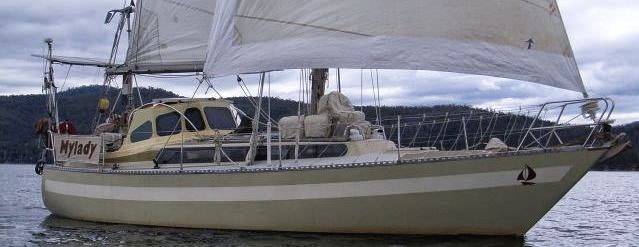I joined m/v
Jeanette in September and were introduced to the frustrating event of waiting
(and nagging) for freight. In a four week period we only made one short
trip. In Dunkerque France Amsterdam Ijmuiden Netherlands Salerno Italy Turkey Ceuta , Spain Netherlands Italy Salerno Turkey Sea of Marmara and in the Gulf of Izmit Istanbul Rota and Diliskelesi. From
Salerno Gulf of Izmit Turkey Italy Tarragona Spain Barcelona Tarragona Rouen France Sweden
Monday, November 28, 2011
Thursday, November 17, 2011
HIGH SEAS REPORT – TECHNICAL
Some information
about Eelco’s professional life for the year 2011.
Motor Vessel
Jeanette – belongs to Egbert Bos who also captains his second ship, m/v Anet.
(This was the ship I worked on last year). The owner is Dutch and younger
than Eelco. M/v Jeanette is a general cargo ship of 6000
mt DWT, 110 mtr long and 14 mtr wide. General speed in normal
conditions around 11 knots. She was build in Germany Netherlands Western Europe from the Black Sea in the south to the Baltic Sea in the North.
The crew is from
the United Nations. Captain Eelco is Dutch and works as a freelance relief
captain for three months a year. The permanent captain Wim, now on
holiday, is also Dutch and the oldest of the team. Wim was a
fisherman before with his own fishing boat for years. When the catch became uneconomical he sold
his ship and went back to school to get his master ticket for the merchant
marine. His is involved in the Jeanette since new-build first as chief
officer and later as captain. Eelco has
a good soundboard in him. The Chief mate is Dutch and known to Eelco from his
previous job / ship (same owner) where he worked as second officer.
Second mate is Filipino and also he worked with Eelco on his previous ship as
boatswain. The relief Chief Engineer at this moment is from Murmask
in Russia Croatia
Sunday, November 13, 2011
ON THE TRAIN in NETHERLAND
Mostly the
train stations of the well runned rail network are just a peron (an elevated step-off) with a
see-through weather shield - practical. Logic has it that the bigger the place
the larger the station. One such station
building has a décor theme of old Edwardian style. Lovely lacework fringes the roof lines and
buildings while small decorative post on corners and roof ridges proudly make a
statement of presence of an era.
Welcomingly and stylish the benches to wait on, invite for a
sit-down. A whistle sounds, bells ring,
the doors close and with an expecting feeling if all is well and on time, the
travellers look around to see if a known face is sharing the ride before
settling down with a telephone, ipad, newspaper or some office work. Gently
rocking, the train departs and settles soon on a well known track, rhythm and
tune. With a soft but intense high note the wheels
whistle on the steel tracks to a high crescendo. At hundred and forty eight kilometres per hour
we fly along to the next stop on this rack.
Many if not most of the walls lining the railroad have graffiti art on
it, colourful and with different styles.
Cold autumn weather presents the passing countryside with patches of
yellow, orange, brown or still some green bush as it rolls by. Many places the trees are already stripped
bare from any leaves which for the time being, still beautify the landscape
with a carpet on the ground of warm and rich autumn colours. A yellow and blue train flashes by in the opposite
direction, shaking the trains slightly with their airstreams meeting and
pushing, and blotches out sight from the window for a few seconds. Soon after, our train reduces speed and a car
park packed to the brim comes in sight.
Many stands of parked bicycles, ten in a row, follow and then the rows
of closed bicycle containers.
Continuously our train paces down in speed and sound. It shunts on the rails with metal screeching
like a cat scratches its nails in lamentation on a glass windowpane. We approach the Houten station. Super futuristic with clear glass dome roof
and clear tunnels on a shiny steel structure it could well have been the
docking station in a Startrek movie with it’s décor of crisp, clear, clean – no
frills, streamlined, modern and fast on the eye and mind. The train stops. Whistle sounds. Doors open.
People step in and out. Whistles - bells - closing doors - five minutes
gone and the train pulls out of the station.
Subscribe to:
Posts (Atom)



